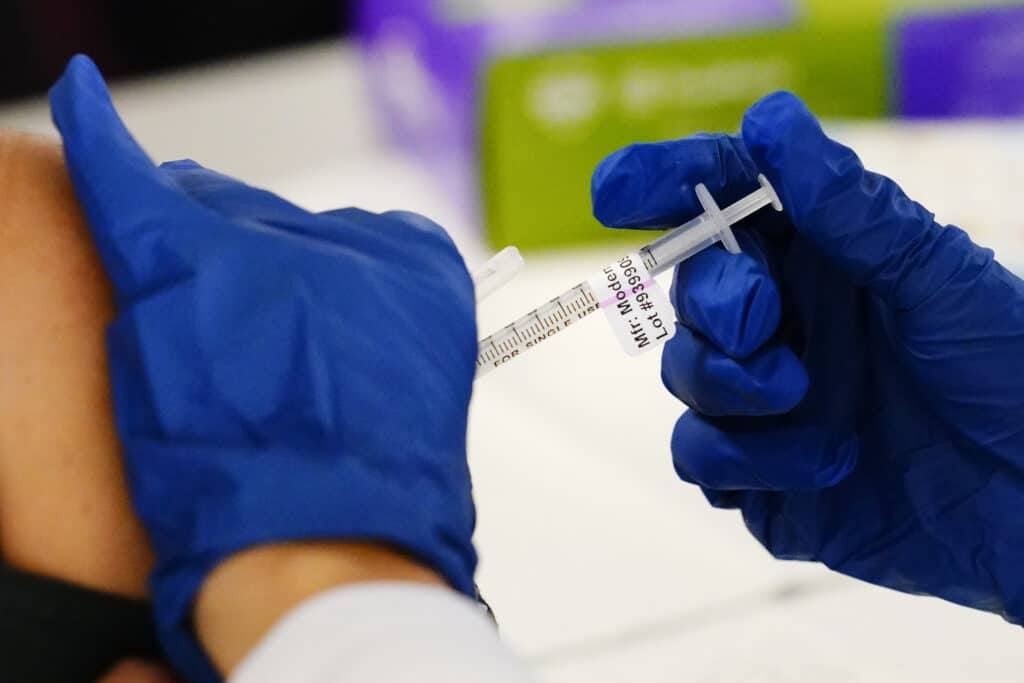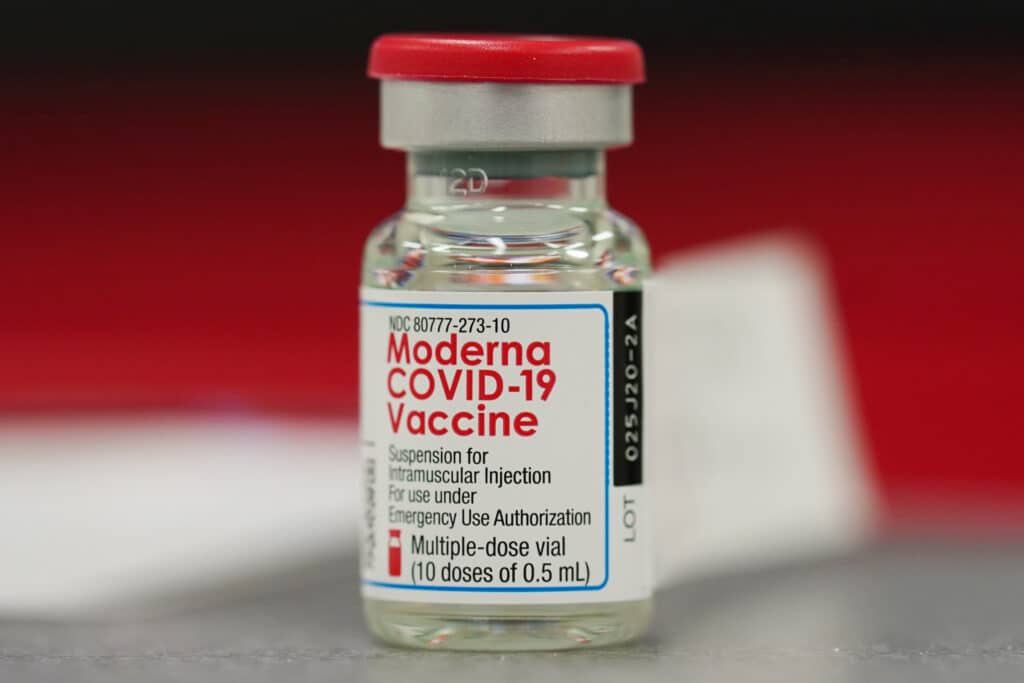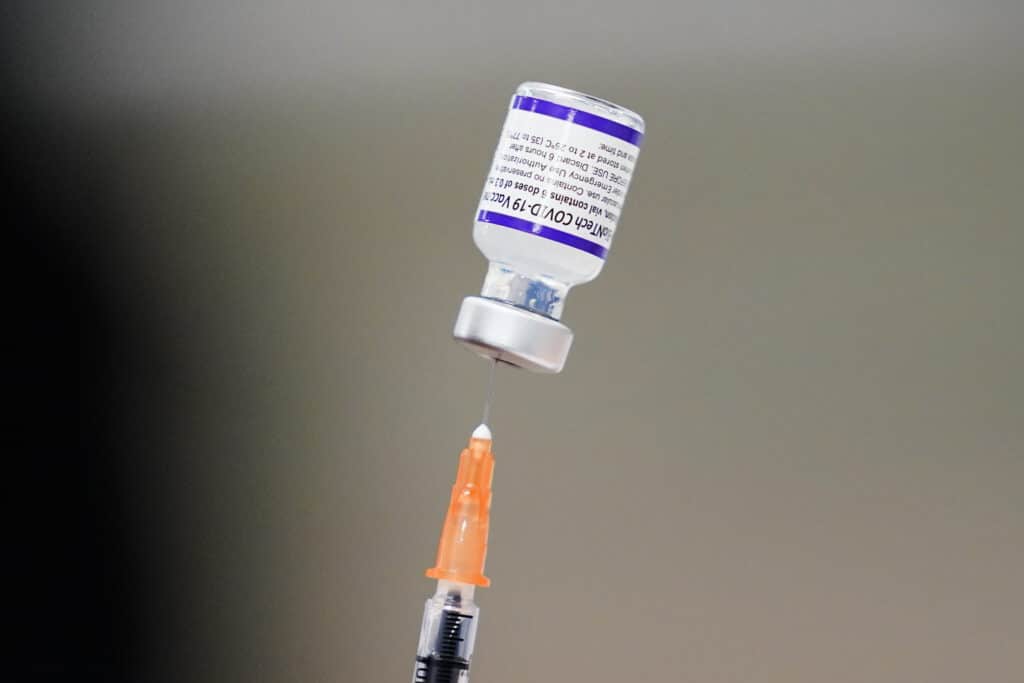Moderna said in the coming weeks it would ask regulators in the U.S. and Europe to authorize two small-dose shots for children under 6, and the company also is seeking to have larger-dose shots cleared for older children and teens in the U.S. Early results from the study found that tots developed high levels of virus-fighting antibodies from shots containing a quarter of the dose given to adults. As reported by the AP:
Parents have anxiously awaited protection for younger tots, disappointed by setbacks and confusion over which shots might work and when
Moderna’s COVID-19 vaccine works in babies, toddlers and preschoolers, the company announced Wednesday — and if regulators agree it could mean a chance to finally start vaccinating the littlest kids by summer.

Moderna said in the coming weeks it would ask regulators in the U.S. and Europe to authorize two small-dose shots for youngsters under 6… The company also is seeking to have larger-dose shots cleared for older children and teens in the U.S.
Early results from the study found that tots developed high levels of virus-fighting antibodies from shots containing a quarter of the dose given to adults — although it was less effective against the super-contagious omicron mutant than prior variants.
“The vaccine provides the same level of protection against COVID in young kids as it does in adults. We think that’s good news,” Dr. Stephen Hoge, Moderna’s president, told The Associated Press.
The nation’s 18 million children under 5 are the only age group not yet eligible for vaccination. Competitor Pfizer currently offers kid-sized doses for school-age children and full-strength shots for those 12 and older.
But parents have anxiously awaited protection for younger tots, disappointed by setbacks and confusion over which shots might work and when. Pfizer is testing even smaller doses for children under 5 but had to add a third shot to its study when two didn’t prove strong enough. Those results are expected by early April.
Vaccinating the littlest “has been somewhat of a moving target over the last couple of months,” Dr. Bill Muller of Northwestern University, an investigator in Moderna’s pediatric studies, said in an interview before the company released its findings. “There’s still, I think, a lingering urgency to try to get that done as soon as possible.”
The younger the child, the smaller the dose being tested. Moderna enrolled about 6,900 kids under 6 — including babies as young as 6 months — in a study of the 25-microgram doses. They developed levels of antibodies just as strong as young adults who get full-strength shots, the company said.
COVID-19 vaccines in general don’t prevent infection with the omicron mutant as well as they fended off earlier variants — although they do still offer strong protection against severe illness.
Moderna’s study in tots was conducted during the omicron surge and found the same trend: While there were no severe illnesses, the vaccine proved just under 44% effective at preventing milder infections in babies up to age 2, and nearly 38% effective in the preschoolers.

But Hoge said high antibody levels still should translate into protection against severe disease in young kids just like they do in adults, “which ultimately is probably the strongest reason for somebody to get vaccinated.”
Moderna said the small doses were safe, and the main side effects were mild fevers like those associated with other commonly used pediatric vaccines.
Booster doses have proved crucial for adults to fight omicron and Moderna currently is testing booster doses for children, either a third shot of the original vaccine or an extra dose that combines protection against the original virus and the omicron variant.
Once Moderna submits the data to the Food and Drug Administration, regulators will debate whether to authorize emergency use of the small doses for tots. If so, the Centers for Disease Control and Prevention then will decide whether to recommend them.
While COVID-19 generally isn’t as dangerous to youngsters as to adults, some do become severely ill. The CDC says about 400 children younger than 5 have died from COVID-19 since the pandemic’s start. The omicron variant hit children especially hard, with those under 5 hospitalized at higher rates than at the peak of the previous delta surge.
Parents may find it confusing that Moderna is seeking to vaccinate the youngest children before it’s cleared to vaccinate teens. While other countries already have allowed Moderna’s shots to be used in children as young as 6, the U.S. has limited its vaccine to adults. A Moderna request to expand its shots to 12- to 17-year-olds has been stalled for months.
The company said Wednesday that, armed with additional evidence, it is updating its FDA application for teen shots and requesting a green light for 6- to 11-year-olds, too.

Hoge said he’s optimistic the company will be able to offer its vaccine “across all age groups in the United States by the summer.”
Moderna says its original adult dose — two 100-microgram shots — is safe and effective in 12- to 17-year-olds. For elementary-age kids, it’s using half the adult dose.
But the FDA never ruled on Moderna’s application for teen shots because of concern about a very rare side effect. Heart inflammation sometimes occurs in teens and young adults, mostly males, after receiving either the Pfizer or Moderna vaccines. Moderna is getting extra scrutiny because its shots are a far higher dose than Pfizer’s.
About 1.5 million adolescents have used the Moderna vaccine in other countries, “and so far, we’ve seen very reassuring safety from that experience,” Hoge said.
The heart risk also seems linked to puberty, and regulators in Canada, Europe and elsewhere recently expanded Moderna vaccinations to kids as young as 6.
“That concern has not been seen in the younger children,” said Northwestern’s Muller.
By LAURAN NEERGAARD Medical Writer






